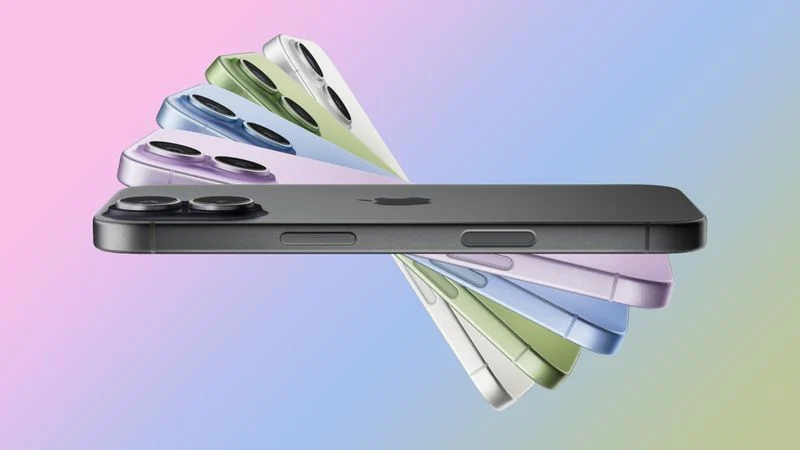
The Great Encyclopedia of the iPhone 17 Series: The “Slim” Revolution and Boundless Performance
Apple’s Fall 2025 announcement, the debut of the iPhone 17 series, was not just a routine facelift but a strategic shift in the history of

Apple Stirs up everything – iPhone Repair Base explains: Apple launched its annual developer conference on Monday, this time completely online. The keynote unveiled the novelties of their operating systems, such as iOS, iPadOS, and macOS, and something huge.
However, the method used for this has never been applied by anyone. Apple’s approach is much more calculated and prepared than the attempt of Microsoft or Intel to enter the mobile market years ago. Which they abandoned with the same momentum.
Developers can start playing with a Mac mini powered by an Apple A12Z chip this week already. But consumers will have to wait till the end of the year for the first hardware with Apple chips.
Plus new computers will be released with Intel processors as well in the next two years. Which will avoid forcing this on people who do not feel it urgent to change over to the new hardware.
But on the other hand, a carefully built and complete ecosystem will await anyone who buys an Apple chip powered Mac at he end of 2020.
They will find all existing Apple software available, including professional tools like the Final Cut Pro video editing system. Which was also used to demonstrate the performance of the chip. Filters were applied to a running 4K video in real time completely smoothly.
Microsoft has already produced a native version of Office software (Word and Excel for sure), and Adobe has prepared Lightroom and Photoshop for the switch. A rather solid day zero.
So, furthermore, the latest version of macOS, the Big Sur (to be released this year), will come with a middleware called Rosetta 2 by default which will allow apps written for Intel to run on Apple chips.
This is necessary because Apple chips are ARM-based like mobile chips, while Intel works with the completely different x86 architecture. Rosetta 2 was demonstrated using a complex 3D designer program, Maya.
Oh and with Tomb Raider as well; the converted video game also ran perfectly fine. Not enough?
In a small window, as if a mobile or tablet is in front of us, but still there, running. With a little fine-tuning, the developer can adjust the code to the large displays of Macs. Then of course, some adjustment for the mouse and keyboard will become expedient as well because touching a screen works very differently than these peripherals.
As said, having an app already optimized for all platforms (macOS and iOS) presents some advantages.
So, for example, the main menu will change in the operating system of iPhone, iOS 14. A feature called App Library automatically organizes apps into folders, such as games, social apps, and recently added apps.
Mini apps and widgets can be placed among the icons, which will be represented the same way, by rounded squares or rectangles, as the icons, but in larger area.
They span the area of four or eight icons and display easy-to-read content. They kind of look like a notification panel or one of the Apple Watch apps placed in the main menu.
There will be stacked widgets as well which you can shift through to see information from several apps in the same place. It’s a clever idea to fit important information in a much smaller space.
Siri has been redesigned to take up less space, and not the full screen, when something is asked from the voice-controlled assistant.
If we want to open something in the browser, it will launch Safari immediately, but when we are only interested in some brief information, a panel will appear with a response similar to app notifications.
The Messages messenger app received a little modernization; important conversations can be pinned to a priority area, and it will be easier to indicate who is a member of a group conversation.
Voice recognition was also enhanced with learning algorithms, and Apple created a proprietary, completely offline translation software that also reads out aloud foreign-language responses to us.
The app should automatically recognize the spoken language and does not need to be set manually. Another exciting innovation is the digital car key that can be uploaded to phone.
At first, this will work with one of the BMW models. It can be used for door opening and engine start.
Obviously, it is our responsibility to give the key of the BMW to someone who can drive it responsibly.
A solution called App Clip will be a great help if we are at a location where an app could be used (paying a parking fee for example), but we do not have the specific app on our phone.
So, in this case, we can activate the service provider’s app, either by touch, like on an ATM, or by reading a circular signal similar to a QR code with the camera; as a result, a few megabytes will be downloaded, not the entire app.
This will automatically identify us using the Apple account provided on our mobile phone. We don’t have to register separately at the service provider (parking company, coffee shop, etc.). It is enough to link our debit card to our Apple account, and we have already paid with this one touch.
The graphical interface of the iPadOS 14 has received a minor modernization; the most significant change might be the transformation of the search bar. Which will be quite similar to Spotlight search bar on macOS.
Only a search bar is displayed, and as soon as we start typing something, the potential results pop up immediately.
Apple Pencil went through much more prominent changes since iPadOS 14 can convert handwriting to typed text automatically. It can even corrects shapes! If we draw a totally lame pentagon for example, it will turn it into an accurate pentagon.
There is a new Airpods functionality tangentially related to these announcements. When we put down the iPhone after listening to a podcast or song and take up the iPad with a Netflix movie.
The Airpods in our ears detect that the content is coming from a different source and automatically switch from one device to the another.
This will be exciting in families where more people are handling the gadgets. The built in accelerometer of the earphones detects when our head moves. It adjusts the surround effect accordingly to produce sounds that always seem to be coming from the direction of the display.
Similarly, if we rotate the iPad in our hands, we will hear a different spatial effect.
The improvements included in the Big Sur version of macOS are also mostly cosmetic; in addition to being able to run on the new processors of course. The apps’ sidebar has changed. Rounded squares and rectangles are used everywhere, and the highlights evoke the design of iOS / iPadOS.
The safety solutions of Safari are also really significant; the management of extensions and plug-ins have become quite detailed in the browser.
We can specify the websites whose data can be accessed for each extension. Plus this access can be restricted to a single day so that these apps can’t collect data about us automatically.
The browser also received new language enhancements which allow us to translate the text of a website.
Apple did not present at the WWDC any hardware that would instantly open a fan’s wallet. Yet, this was the most significant announcement from the Californian company in recent years.
A new era dawns in which Apple will pretty much rule over its entire ecosystem, from the last chip to the software.
They will have an easy time doing it if everything will really work as flawlessly as in the demonstrations today. Tens of millions of customers and 23 million app developer partners will happily open their wallets as soon as the first pieces of hardware become available with Apple chips.

Apple’s Fall 2025 announcement, the debut of the iPhone 17 series, was not just a routine facelift but a strategic shift in the history of

China has developed the world’s first 6G field test network, which integrates communication and artificial intelligence, demonstrating that 6G transmission capabilities can be achieved using